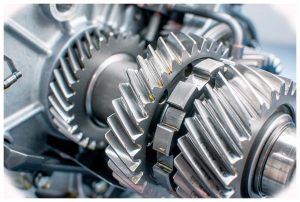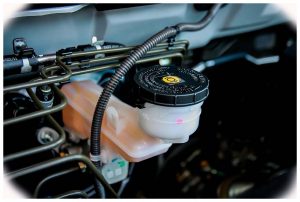At some point, almost every car owner has experienced the frustration of a car that won’t move in gear. Whether it’s a manual or an automatic, the lack of movement when shifting into gear can be caused by various issues ranging from low transmission fluid levels to worn-out drive belts and faulty exhaust systems. No matter what is wrong with your vehicle, diagnosing and fixing the problem can often be achieved without expensive repairs or labor-intensive work.
Common Causes Of A Car Not Moving In Gear
 Transmission Slipping
Transmission Slipping
One of the most common causes for a car not moving in gear is an issue with the transmission. It could be due to low transmission fluid levels, which can cause slipping in gears or difficulty shifting into certain gears. It could also be due to worn-out parts within the transmission, such as clutches, seals, and gaskets. If any leaks are coming from your vehicle’s transmission system, it could also prevent it from moving smoothly through different gears.
Low Fluid Levels
Another possible cause for your car not moving in gear is low fluid levels in either its engine or transmission. Low transmission fluid levels can cause the gears to slip and make it hard to shift into gear, while low engine oil could lead to a lack of power or stalling when shifting. Make sure to check your vehicle’s oil and transmission fluid levels regularly.
Clutch Issues
Clutches are an important part of manual transmissions, as they help the gears shift smoothly when changing speed or direction. If your car is not moving in gear, it could be due to a worn-out clutch or other related issues such as low clutch fluid levels, improper pedal adjustment, and worn-out drive belts.
Exhaust System Problems
The exhaust system is important in providing power for your car to move forward and backward. If there is an exhaust leak, it can cause your car not to move in gear properly, as the flow of air needed for combustion is disrupted. Poorly maintained mufflers can also reduce engine power by restricting exhaust gas flow, leading to difficulty shifting into gear or stalling when attempting to move in either direction.
Solutions For Common Causes Of A Car Not Moving In Gear
Checking The Transmission Fluid Level
If your car is not moving in gear, then the first thing you should do is check the transmission fluid levels. Low levels can cause slipping in gears or difficulty shifting into certain gears, so top off any low fluids as soon as possible.
 Replacing Clutch Fluids
Replacing Clutch Fluids
Clutches rely on fluids to operate properly, so if your car isn’t moving in gear, it could be due to a lack of clutch fluid. If this is the case, you should replace any low or contaminated fluids with fresh ones to get your vehicle running smoothly again.
Adjusting The Clutch Pedal Position
Another possible solution for cars that won’t move in gear is adjusting the clutch pedal position. It can help ensure that the clutch has enough pressure when engaging and disengaging from a certain gear which can help restore normal shifting behavior.
Replacing Worn Out Parts
If all else fails, you may need to replace worn-out parts such as seals, gaskets, and clutches that may be causing problems with your vehicle’s transmission system. It requires more labor-intensive work, but it could fix any issues with your car not moving in gear.
Filing Up An Exhaust Leak Or Faulty Muffler
If your car isn’t moving in gear due to an exhaust leak or faulty muffler, you should try to fill up any leaks or replace the muffler if necessary. It could restore proper airflow through the engine and help get your car back on the road.
Inspecting/Replacing Worn Out Drive Belts
Worn-out drive belts can also prevent your car from moving in gear. If this is the case, then you should inspect all of the belts for wear and tear and replace any that are damaged or worn out.
Conclusion
Diagnosing and fixing a car that won’t move in gear can be a tricky process, but with some basic knowledge of common causes and solutions, it can often be achieved without expensive repairs or labor-intensive work. Check transmission fluids, clutch fluids, pedal positions, exhaust systems, and drive belts for any signs of wear or damage before attempting more complex fixes for cars that won’t move in gear.


 Transmission Slipping
Transmission Slipping Replacing Clutch Fluids
Replacing Clutch Fluids
Add Comment